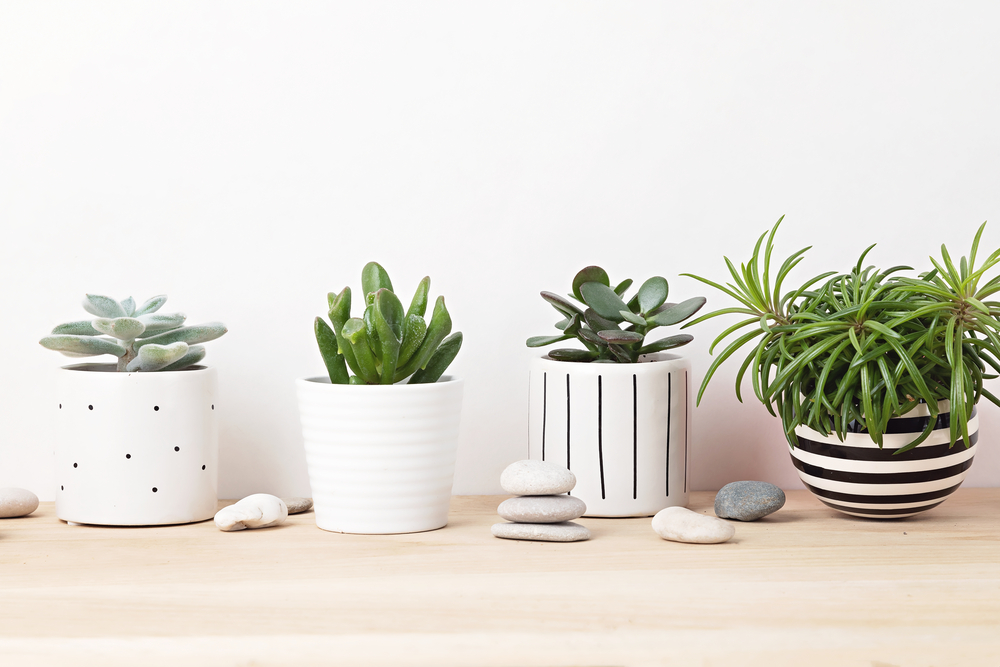10 Plants For Inside your Home
If you’re passionate about green but don’t know where to start, don’t worry. We selected species that are versitile and easy to find.
The presence of plants in the house is essential and brings us benefits: they improve air quality, calm us down, and make the most charming and cozy environments. It is a great option to improve the decoration without spending a lot of money, but it is necessary to be attentive in the choice of each species and identify which are the most suitable for cultivation indoors because most of them adjust better in spaces with good light and a little ventilation.
We selected species that do very well in internal areas and that are able to change the mood of any space of your home. Check them out:
1. Ficus Lyrata
Popularly known as fiddle-leaf fig. This is one of those plants that become the main focus of the room, besides being very well versed in decoration. With its wide leaves, very green and shiny, this tree becomes the highlight in any space, it can be used in the living room, dining room, bedroom, and even in the kitchen. As for irrigation, Ficus needs water but does not like soaked soil.


2. Zamioculca
Zamioculca, also known as Zanzibar Gem, is a very popular species in decoration. It adapts perfectly in places with little natural light and indoor spaces. They can survive very well even in unfavorable conditions of water and lighting. It stands out for the beauty of its shiny leaves, with the appearance of wax, in a very dark shade of green. They are widely used in indoor areas such as living rooms, corridors, halls, stores, and offices.
Be careful with the amount of water, watering can happen once a week or every fifteen days, depending on the season.


3. Peace Lily
It is the right choice for those who want a plant with abundant flowering and easy cultivation. It has a unique beauty, able to brighten up any space, and helps to improve the air quality indoors.
It prefers diffuse light, meaning it does not like direct exposure to the sun. Therefore, it is a good choice for indoor and shaded areas.


4. Orchid
Orchids are many people’s favorite flowers and it is a great option for spaces below windows that have ventilation and direct light during a few hours of the day.
One of the most common species is Phalaenopsis, whose flowers are rounded and vary between white, pink, yellow, and purple.
Try watering the orchids only once a week. The ideal is to refresh your roots by placing them on a plate with water and, after a while, remove them. This will be more than enough for your flower to grow healthy.
5. Croton
It is a species widely used in the ornamentation of indoor spaces, although it does not take air conditioning well. It draws attention mainly for its intense and bright coloration, with parts in shades of red, purple, pink, white, yellow, green, or orange.
The exuberant foliage will only be maintained if the plant receives enough direct sunlight. Therefore, place the vase right by a window.


6. Succulents and Cacti
One of the biggest benefits of cacti and succulents at home is the fact that both require little care and remain beautiful all year round.
They are perfect for more sunny areas, such as balconies, but can also be used as table centers bringing delicacy to the decor.


7. Centipede Tongavine
The Centipede Tongavine is one of the most versatile, resistant, and adaptable plants to have indoors, since it settles in a small space, getting smaller leaves when planted in pots or pendants and, if grown in an outdoor space, turns into an excellent living fence or creeper. It is a half-light plant, that is, it does not need to receive sun directly, it just needs the environment to have plenty of natural light.
Water it twice a week.


8. Radiator plants
Radiator plants do not take up much space, likes the heat, and are not toxic. It has very ornamental hanging foliage, delicate in appearance. Its leaves are juicy and heart-shaped, usually in shades of green with yellow or white edges. Great for vertical planting or for decorating shelves and bookshelves.
It must be grown in half-shade.


9. Asplenium
With long, whole, and shiny leaves, Asplenium is the cousin of the fern. It likes heat and humidity, but it can’t resist the sun directly on the leaves or the cold. The ideal is to keep it in a place with diffuse, indirect light. It can be placed both on the ground as well as on vases.
Avoid watering the plant over and in the center (in the dark part), as there is plenty of water in this area, which can contribute to its rottening and inhibit the development of new leaves.


10. Chamaedorea
This small palm tree is super charming and a great option for decorating bright indoor spaces, but with diffuse light. Unlike Areca palm, the best-known cousin with whom it is usually mistaken, this plant adapts to air-conditioned environments. It is very simple to take care of, a place near the window, and some nutrients to gain the beauty of a mini palm tree.








